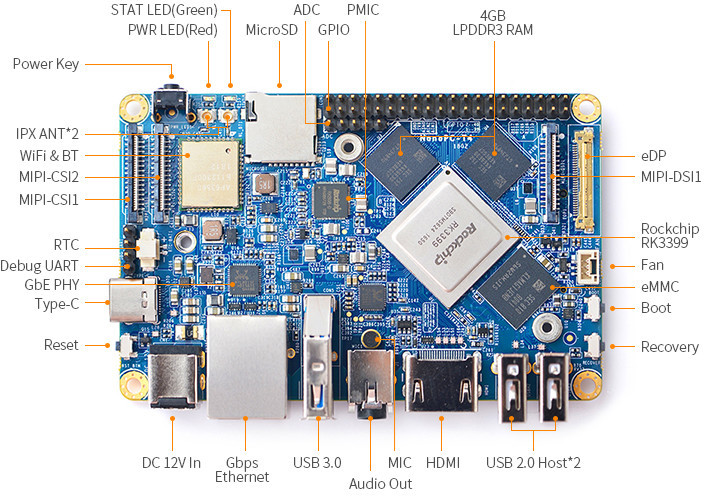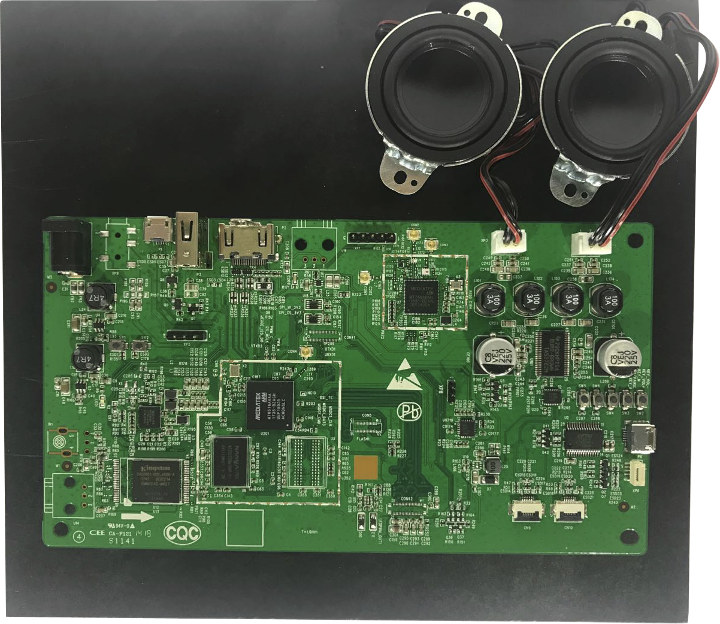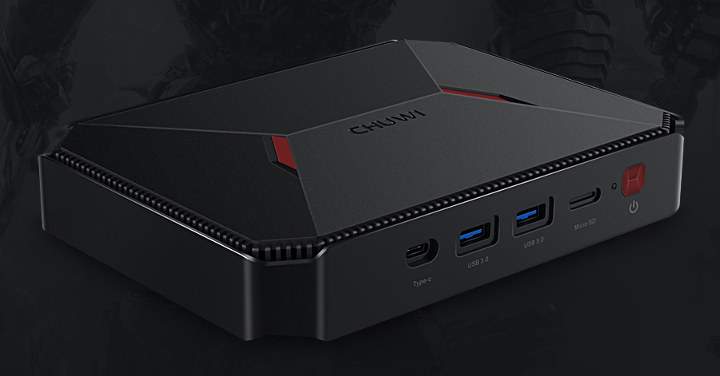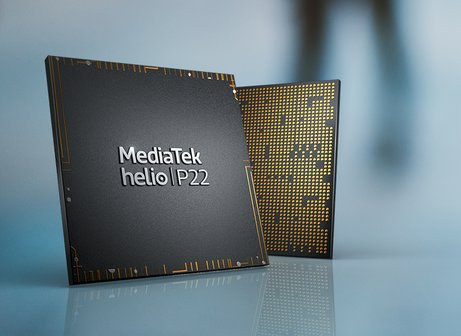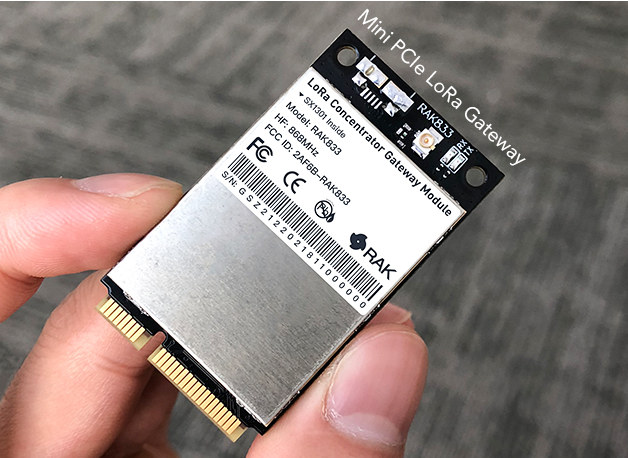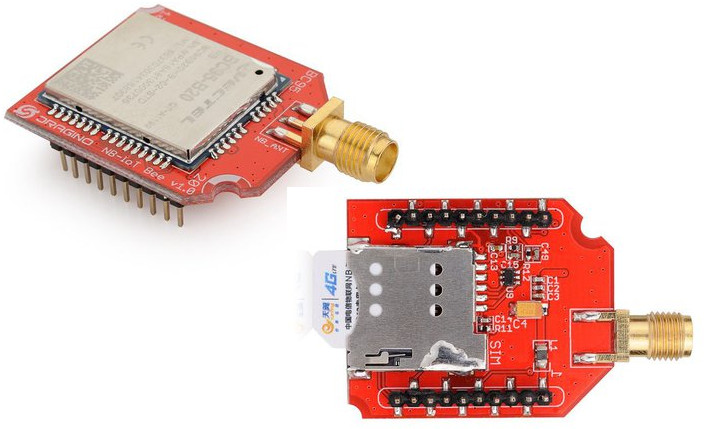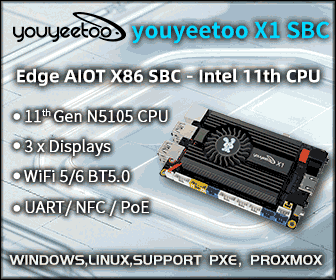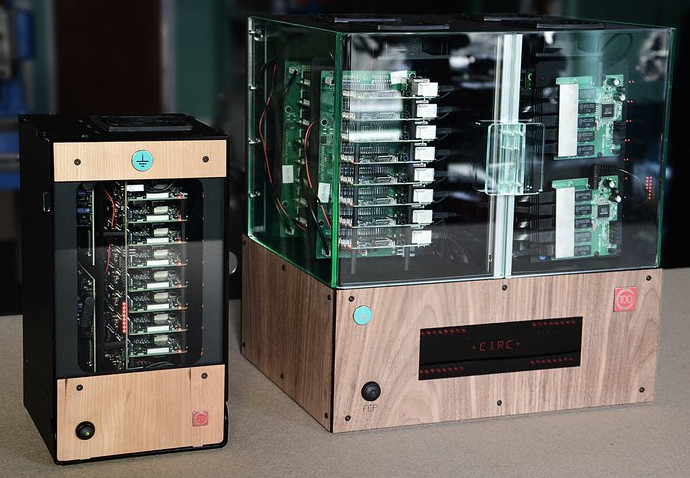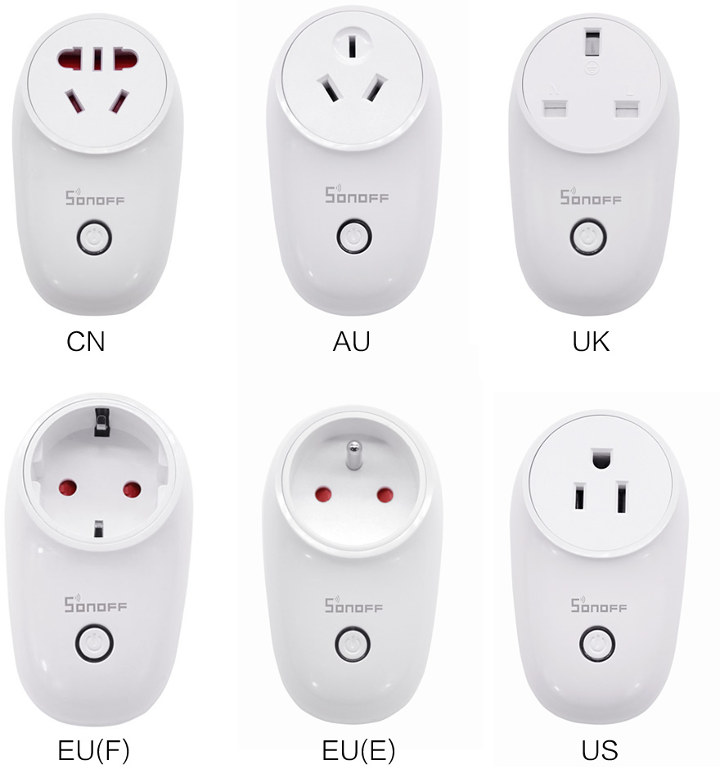Earlier this year, we have a number of SBCs based on Rockchip RK3399 hexa-core processor from Orange Pi RK3399 to ODROID-N1, or Pine64 RockPro64 boards. FriendlyELEC has joined the fray with their NanoPC-T4, which they claim is the the smallest RK3399 based high-performance ARM board. The SBC comes with 4GB RAM, 16GB eMMC flash, dual-band WiFi module and an M.2 PCIe interface with NVME SSD support. NanoPC-T4 board specifications: SoC – Rockchip RK3399 hexa core big.LITTLE processor with two Arm Cortex-A72 cores up to 2.0GHz, four Cortex-A53 cores up to 1.5GHz, and a Mali-T864 GPU withsupport for OpenGL ES1.1/2.0/3.0/3.1, OpenVG1.1, OpenCL, DX11, and AFBC System Memory – 4GB dual channel LPDDR3 Storage – 16GB eMMC 5.1 flash, M.2 slot for NVMe SSD, 1x microSD slot Display / Video Output HDMI 2.0a up to 4K @ 60Hz withHDCP 1.4/2.2 DisplayPort 1.2 Alt Mode on USB Type-C LCD I/F – 1x eDP […]
A Closer Look at Mediatek MT8516 Cortex A35 SoM / Devkit for Android Things
Earlier this month, Google released Android Things 1.0, the first stable release for the IoT operating system, and announced several certified SoMs (systems-on-module) based on NXP i.MX 8M, Qualcomm SDA212 & SDA624, and MediaTek MT8516 SoCs. However at the time, beside some information about the processor itself, there was not many details about MT8516 system-on-module. Since then, MediaTek wrote a blog post about their Cortex A35 solution for Android Things & Google Assistant, so let’s have a look. First the MT8516 SoM is not exactly what I had expected, but instead a complete single board computer, and this is why they call it virtual SoM (vSOM). Google defines the latter as reference design provided by the chip vendors and certified by Google. Mediatek MT8516 quad core Cortex A35 vSoM / development board specifications: SoC – MediaTek MT8516 quad core Cortex A35 processor without GPU System Memory – 4Gbit (512MB) DDR3L […]
$240 CHUWI GBox Mini PC Offers HDMI and VGA Outputs, a Quad Core Gemini Lake Processor
Another day, another Gemini Lake mini PC, with CHUWI GBox which has just been listed on GearBest for pre-order for $239.99 plus shipping. [Update: CHUWI GBox is sold for $189.99 on GeekBuying with coupon CHUWIGBOX until 2018/7/11] The device features Intel Celeron N4100 quad core processor, 4GB RAM, 64GB storage, a slot for 2.5″ SATA drives or/and an M.2 SSD, HDMI and VGA video output ports, and more. CHUWI GBox Specifications: SoC – Intel Celeron N4100 quad core processor up to 2.4 GHz with Intel UHD Graphics 600; 6W TDP System Memory – 4GB LPDDR4 Storage – 32GB eMMC flash + 32GB SSD, 2.5″ SATA bay, micro SD card up to 256GB Video Output – 1x HDMI 2.0, 1x VGA Audio – Via HDMI, 3.5mm audio jack Connectivity – Gigabit Ethernet, dual band 802.11a/b/g/n/ac WiFi, Bluetooth 4.0 USB – 2x USB 3.0 ports, 2x USB 2.0 ports, 1x USB type […]
MediaTek Helio P22 SoC for “Mid Range Premium” Smartphones Relies on 12nm Manufacturing Process
MediaTek already has plenty of Arm Cortex A53 processors in their portfolio, but with MediaTek Helio P22 they’ve now added another one. One of the selling point of the new processor is that it is manufactured using a 12nm manufacturing process, just like the recently announced Helio P60 SoC, which better performance for the similar power consumption thanks to a higher CPU clock (2.0 GHz). MediaTek Helio P22 specifications: Processor – 8x Arm Cortex A53 @ up to 2.0 GHz GPU – Imagination PowerVR GE8320 GPU @ up to 650MHz System Memory – Up to 4GB LPDDR3 @ 933MHz, up to 6GB LPDDR4x @ 1600 MHz Storage I/F – eMMC 5.1 Connectivity Cellular Technologies – Carrier Aggregation (CA), CDMA2000 1x/EVDO Rev. A (SRLTE), FDD / TDD LTE, HSPA + Specific Functions -TAS 2.0, HUPE, IMS (VoLTE\ViLTE\WoWi-Fi), eMBMS, Dual 4G VoLTE (DSDS), Band 71 LTE Category – Cat-4, Cat-7 DL / Cat-13 UL GNSS – […]
RAK833 is an Industrial Grade mini PCIe LoRaWAN Gateway Card
The most obvious way to setup your own LoRAWAN network is to get an off-the-shelf Gateway such as MatchBox, which can be easily installed, and configured using the built-in web interface. But if you need something more flexible, Rakwireless RAK833 could be an interesting option, as an industrial grade LoRaWAN gateway that you can just insert into an advanced router or computer’s mini PCIe slot. RAK833 card specifications: LoRa Connectivity Semtech SX1301 Digital Baseband Chip for outdoor LoRaWAN macro gateways 2x Semtech SX1255/7 Tx/Rx front-end 49x LoRa demodulators, 10 parallel demodulation paths Frequencies – 433 MHz, 470 MHz, 868 MHz, and 915 MHz Tx Power – Up to 25 dBm Rx Sensitivity – -140 dBm Host Interface – 52-pin mPCIe edge connector with USB and SPI (via FT2232H) signals; Supply Voltage – 3.3V compatible with 3G/LTE mPCIe cards Dimensions – 50.95 x 30 mm The card ships with an external […]
Dragino NB-IoT Bee is a $23 Xbee Compatible NB-IoT Add-on Board
Several companies are already offering XBee NB-IoT add-on board including Digi International themselves, and SODAQ with their NB-IoT Bee N211 module going for 69 Euros. Dragino NB-IoT Bee is another option for NB-IoT connectivity using Xbee form factor, and the board should be cheaper than most as it goes for $23.00 on Tindie with an external antenna. NB-IoT Bee specifications: NB-IoT module Quectel BC95-B5 for B5:850Mhz, B8:900Mhz, or B20:800Mhz in respectively Nb-IoT Bee QB05, QB08, QB20 models (i.e. one frequency is supported by model) Quectel BG96 for LTE Cat M1 & Cat NB1 & EGPRS in Nb-IoT Bee QG96 model Output Powe – 23dBm Sensitivity – -129dBm Micro SIM Slot Input voltage – 4.5v ~ 5.5V Temperature Range – -40°C ~ +85°C Typical applications for such board include smart metering, facility management services, security & fire alarms, asset tracking, smart city infrastructure and so on. If you are looking specifically […]
Circumference Datacentre-in-a-Box Features up to 32 Raspberry Pi 3 B+ Managed by a UDOO x86 Ultra Board (Crowdfunding)
We’ve previously seen several clusters made of Raspberry Pi boards with a 16 RPi Zero cluster prototype, or BitScope Blade with 40 Raspberry Pi boards. The latter now even offers solutions for up to 1,000 nodes in a 42U rack. Circumference offers an other option with either 8 or 32 Raspberry Pi 3 (B+) boards managed by UDOO x86 board acting as a dedicated front-end processor (FEP) that’s designed as a “Datacenter-in-a-Box”. Key features and specifications: Compute nodes – 8x or 32x Raspberry Pi 3 B+ boards for a total of 128x 64-bit 1.4 GHz cores max Backplane MCU – Microchip ATmega1280 8-bit AVR microcontroller Serial Comms – FTDI FT4232 quad-USB UART Switched Mode Power Supply Units (SMPSUs): 8x / 32x software controlled (one per compute node) 1x / 4x always-on (microcontroller) HW monitoring: 8x / 32x compute node energy 2x / 8x supply voltage 2x / 8x temperature Remote […]
Sonoff S26 WiFi Smart Plug Works in All/Most Countries, Sells for under $10
One recurring issue with smart plugs / sockets is that they are often designed with a specific prong type, so if you want to use them in our country you may have to add an adapter, which may not be ideal, since the socket may fall off or have bad contact. Sonoff S26 WiFi smart plug solves that issue as ITEAD Studio made it available in six different versions for China, Australia, United Kingdom, Europe type F, Europe type E, and the United States. Sonoff S26 specifications: Standard – US/ UK/ CN/AU/ EU(type F/E) Power supply – 90V~250V AC @ 50/60Hz Max. Current – 10A Max power – 2200W Connectivity – 802.11.b/g/n 2.4G WiFi with WEP/TKIP/AES encyprtion, WPA-PSK/WPA2-PSK security Dimensions – 104 x 55 x 73 mm (Fire Retardant ABS enclosure) Weight – 130 grams Temperature Range – 0ºC-40ºC Humidity- 5%-90%RH, Non-condensing Certification – CE Just like other Sonoff devices, […]

